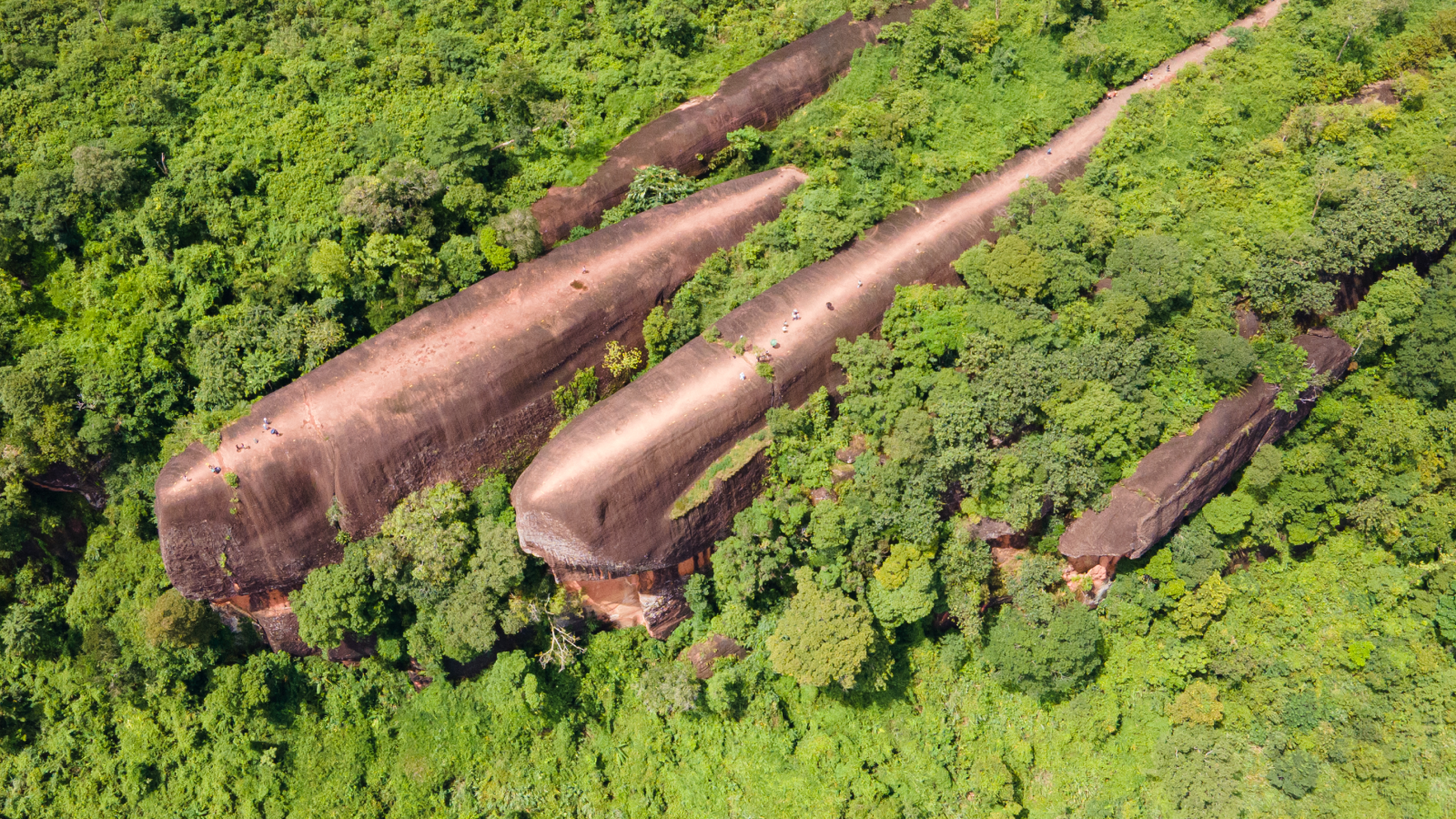Three Whale Rock: Thailand's 75-million-year-old stone leviathans that look like they're floating in a sea of trees
Three Whale Rock is a geological formation and tourist attraction in Thailand's Phu Sing Forest Park that looks remarkably like a small family of whales.

Name: Hin Sam Wan, or Three Whale Rock
Location: Bueng Kan province, Thailand
Coordinates: 18.250964324624285, 103.81396773139028
Why it's incredible: The rock formation looks like a small family of whales.
Hin Sam Wan, or Three Whale Rock, is a natural formation in Thailand that is named after its striking resemblance to a family of whales swimming side by side. It consists of three extremely elongated, rounded boulders that look like giant cetaceans floating in a sea of trees.
Three Whale Rock formed about 75 million years ago due to long-term erosion and tectonic uplift. Wind and rain sculpted and smoothed the sandstone in northeastern Thailand into the shapes we see today, with cracks in the rock helping to form the narrow boulders that now look so much like whales.
The formation is situated near the border between Thailand and Laos, in a forest-covered nature reserve called Phu Sing Forest Park. A network of hiking trails leads up to the three whales, but only the bigger "mommy" and "daddy" whales are accessible by foot. The "baby" whale — the smallest of the three — is closed to the public.
Related: Whale Valley: The whale graveyard in the Sahara desert that shows they once had feet and toes
The views from the "backs" of the two biggest stone whales extend to the Mekong River and mountains in Laos' Pakkading district, according to National Geographic. The whales sit on a high ridge and jut out over the forest canopy, which reinforces the illusion that they are sea creatures in their natural habitat.
Three Whale Rock and the surrounding area are part of the Khorat Plateau. This region of uplifted sedimentary rock holds fossils — including evidence of dinosaurs — from the Cretaceous period (145 million to 66 million years ago) and the Cenozoic era (66 million years ago to present).
Phu Sing Forest Park and its stone leviathans are protected as natural and cultural heritage sites.
Get the world’s most fascinating discoveries delivered straight to your inbox.

Sascha is a U.K.-based staff writer at Live Science. She holds a bachelor’s degree in biology from the University of Southampton in England and a master’s degree in science communication from Imperial College London. Her work has appeared in The Guardian and the health website Zoe. Besides writing, she enjoys playing tennis, bread-making and browsing second-hand shops for hidden gems.
You must confirm your public display name before commenting
Please logout and then login again, you will then be prompted to enter your display name.


